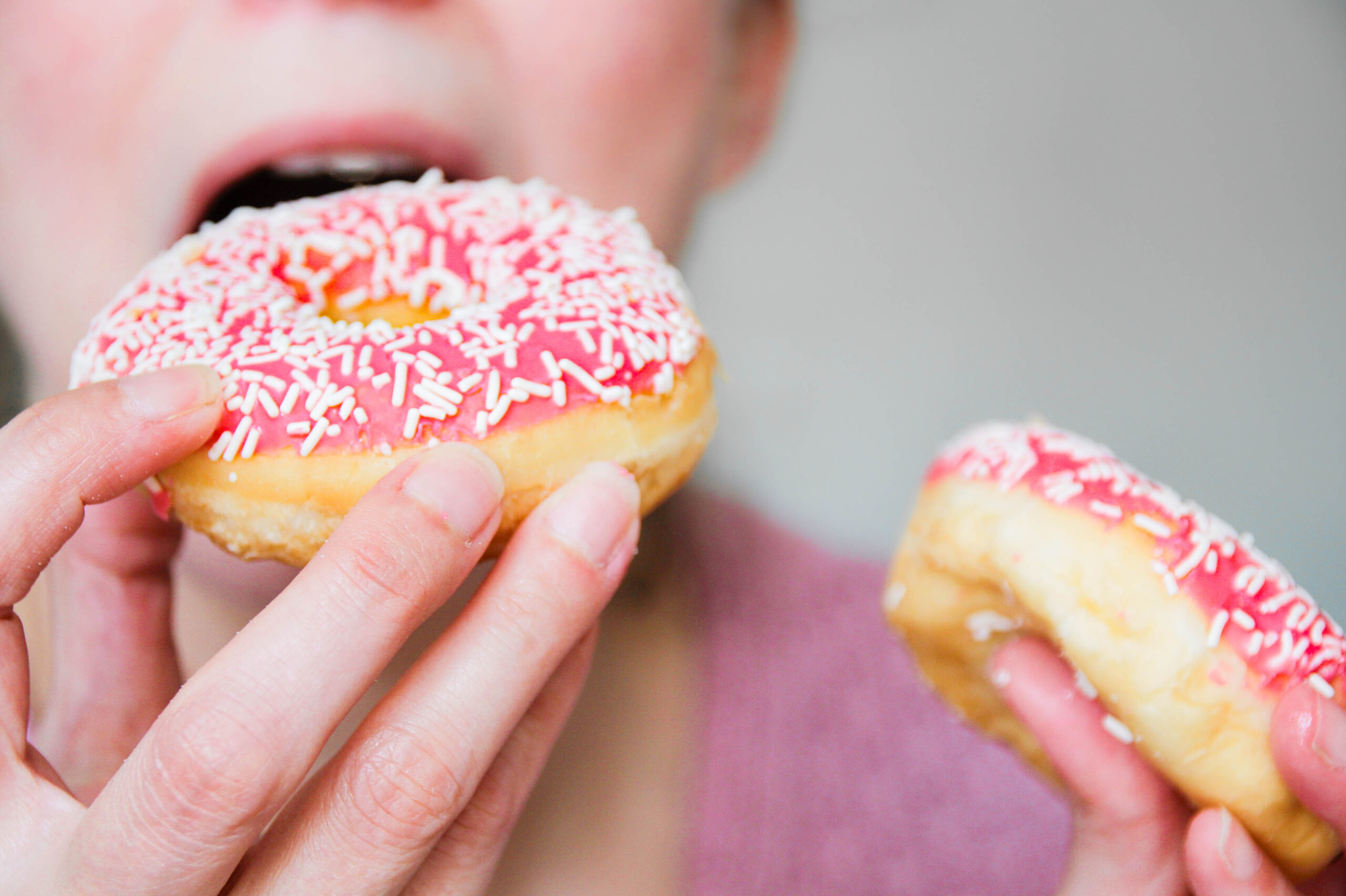Have you ever eaten a meal only to feel hungry again an hour later? Certain foods can trigger increased hunger, leaving you reaching for more food sooner than you’d expect.
To find out why some foods affect us differently, WellTuned spoke with Janet Seiber, a registered dietitian at BlueCross BlueShield of Tennessee.
Which foods increase hunger?
Janet Seiber: Foods higher in refined carbohydrates and simple sugars can make you hungrier after eating them. Think about how you feel after eating pancakes with syrup compared to scrambled eggs with whole-wheat toast. Foods with protein and fiber help make you feel full longer.
Common foods that can trigger increased hunger include:
- White bread and refined grains
- Sugary breakfast cereals
- Pastries and baked goods
- Candy and sweets
- White rice
- Instant oatmeal
- Fruit juices
How food affects the body differently
Janet Seiber: Not all carbohydrates work the same in the body. Some raise blood sugar quickly, while others raise blood sugar at a slower rate. The glycemic index (GI) is a system that rates foods based on how quickly they raise blood sugar levels.
The higher the number on the GI scale, the faster that food is digested. It makes blood sugar rise more rapidly, and then quickly fall. This process makes you feel hungry again at a faster rate. It can also lead to overeating, cravings for sweets, and weight gain.
How do you identify foods with a low glycemic index?
Janet Seiber: You don’t have to know the GI rating of all foods. Look for carbohydrates with a good source of fiber. These have more than 2 grams of fiber per serving on the nutrition label. High fiber source is 5 grams or more per serving. Pair carbohydrate foods with a protein or healthy fat source. Whole-wheat toast with peanut butter will keep you full for a longer time than white bread with jam.
What foods help you stay fuller longer?
Janet Seiber: Low glycemic carbohydrates include fresh fruits, non-starchy vegetables, whole grains, and beans.
Try these swaps to help you stay fuller longer:
- Steel-cut oats instead of instant oatmeal
- Whole-wheat bread instead of white bread
- Brown rice instead of white rice
- Fresh fruit instead of fruit juice
- Nuts or Greek yogurt instead of sugary snacks
How to structure meals for better fullness
Janet Seiber: Eating smaller meals throughout the day can keep blood sugar more stable and prevent excessive hunger. One option is eating three small meals with two healthy snacks. The bottom line is to avoid going for prolonged hours throughout the day without eating a meal or snack. Try eating a meal or snack no longer than four hours apart.
“Understanding how food affects your hunger can help you make choices that keep you satisfied longer,” Janet says. “Small changes in what you eat can make a big difference in how you feel throughout the day.”
More from Janet Seiber on WellTuned
Get more information about specific health terms, topics and conditions to better manage your health on bcbst.com. BlueCross BlueShield of Tennessee members can access wellness-related discounts on fitness products, gym memberships, healthy eating and more through Blue365®. BCBST members can also find tools and resources to help improve health and well-being by logging into BlueAccess and going to the Managing Your Health tab.


